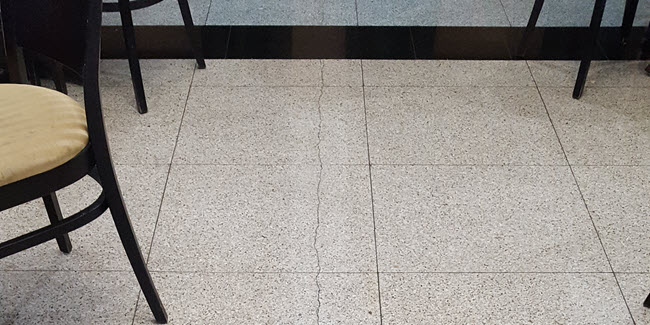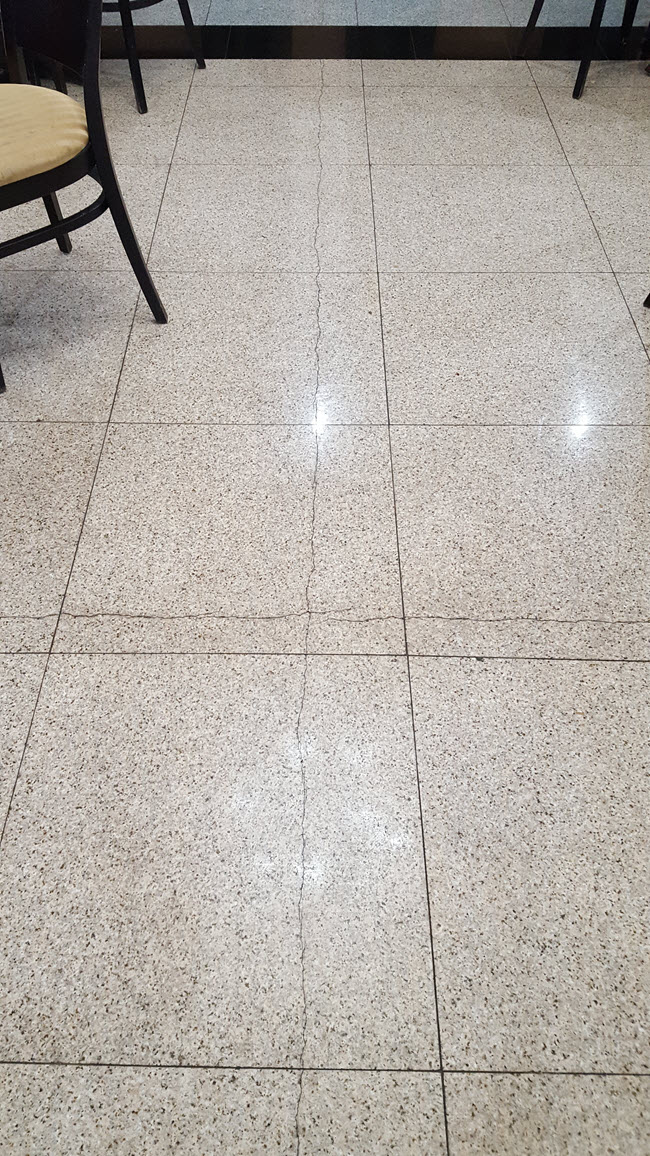 Do You Honor Expansion Joints in a Concrete Floor?
Do You Honor Expansion Joints in a Concrete Floor?
You do, right? Honoring expansion joints in a concrete floor is critical to the success of a ceramic tile floor installation.
If you don't honor them, choosing to ignore them instead, you will wind up with a (preventable) nightmare that will eventually come back to haunt you, the installer, for a long time.
Actually, they don’t go away, they just get worse.
Honor Those Expansion Joints or Face Failure Forever
I'm not exaggerating.
What's an expansion joint?
First, let’s define an expansion joint.
The American National Standards Institute (ANSI) A108.01 section 3.7 provides this explanation:
“Expansion Joint: (1) A separation provided between adjoining parts of a structure to allow movement where expansion is likely to exceed contraction; (2) a separation between pavement slabs-on-grade, filled with a compressible filler material; (3) an isolation joint intended to allow independent movement between adjoining parts.”
ANSI A108.01 section 3.7.1.1 states;
“Openings for movement joints shall extend completely and directly through tilework down to structural backing.”
This sentence means that when tile is installed on a concrete floor which contains expansion joints, a sealant joint (aka caulking joint) must be placed in the tile installation immediately above the joint in the concrete.
The Tile Council of North America (TCNA) Handbook, goes on to state;
“Joints through tilework directly over structural joints must never be narrower than the structural joint.”
This means that if the expansion joint in the concrete is 3/8” wide, the sealant joint in the tile must be the same size.
>> See Why Do You Need Expansion Joints When Installing Tile?

Ignoring the presence of expansion joints
Now the problem.
Unfortunately, some installers ignore the presence of expansion joints in the concrete floor by filling the space with thin set mortar and installing tile over the joint.
At this point the installation looks good and the installer gets paid.
The problem comes when the building moves from temperature and/or humidity changes. When the slab expands or contacts, that movement has nowhere to go except up through the tile.
What Failure Looks Like
The resulting crack generates a callback which requires the installer to go back to repair the cracked tile at his or her expense while hoping there is matching tile to complete the repair.
To illustrate the point of this article, check out the image above.
It's a prime example of a 24” x 24” tile that was installed over the expansion joint in the concrete. the cracking is relentlessly consistent.
Look closely.
When you do, you will see that the cracks in the tile occur very closely to the grout joints.
Imagine. If the installer had shifted the north/south tile layout just 6” to the left and moved the east/west tile layout 2” north, the grout joints would have been in alignment with the concrete joint preventing this eyesore from ever happening.
If you follow the guidelines and honor expansion joints in a concrete floor, you won't have this kind of a customer problem on your voicemail.
What's Preventing You From Honoring Expansion Joints in Concrete Floors?
Let me know.
Here are links to two other articles on the topic of expansion joints:
>> See Quick and Easy Movement Joints... the Right Way
>> See How To Deal With Non-Linear Expansion Joints
If you're an installer and still wondering, consider learning more about the Certified Tile Installer program.
Thanks for reading and please tell your friends where you found this information.


